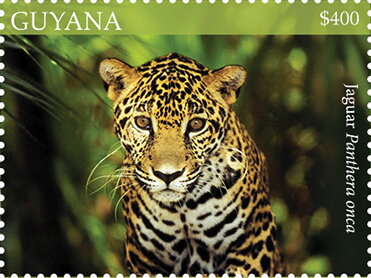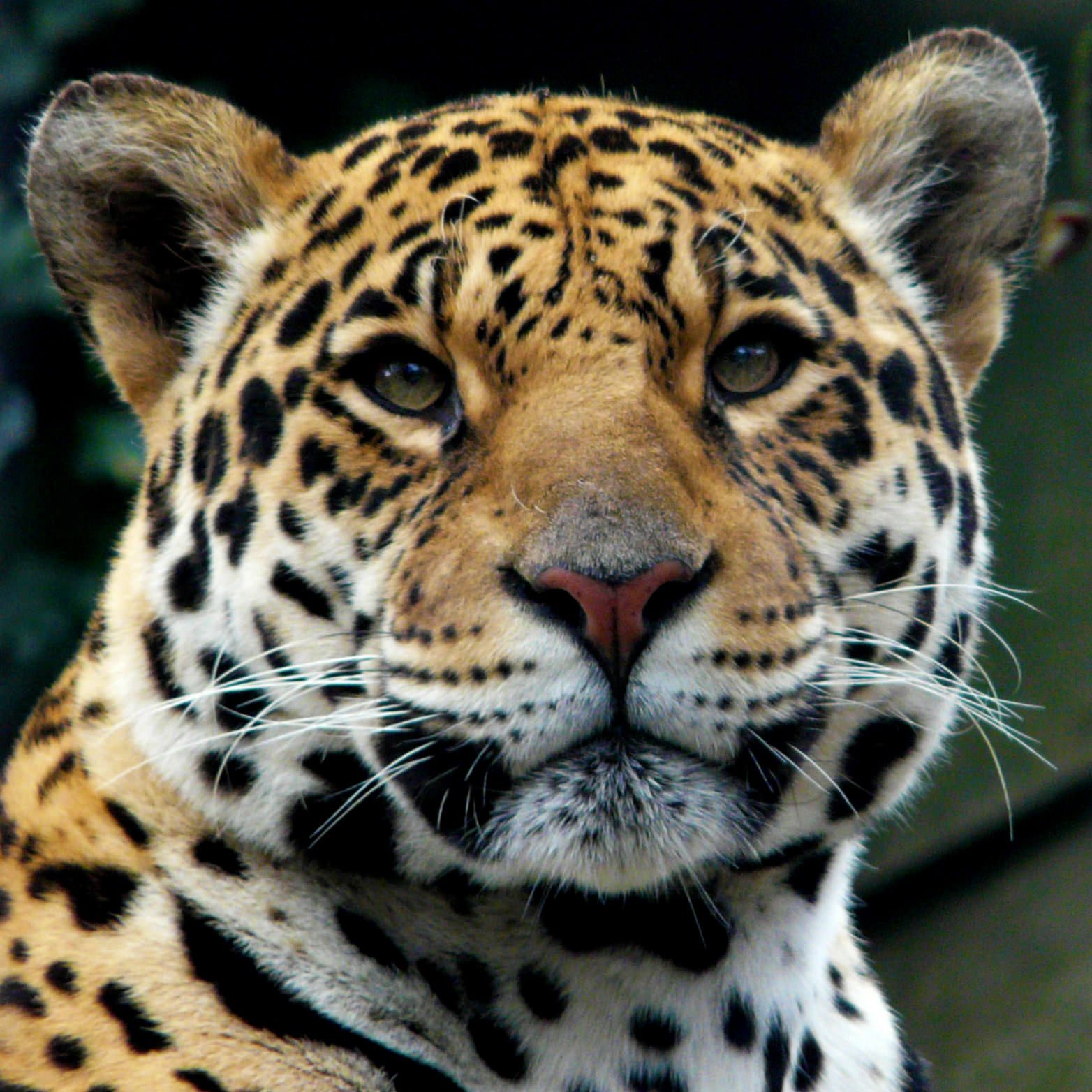Stamp: Jaguar in Forest, Facing Camera (Guyana 2017)
Jaguar in Forest, Facing Camera (Guyana 2017)
07 December (Guyana ) within release Jaguar (2017) goes into circulation Stamp Jaguar in Forest, Facing Camera face value 400 Guyanese dollar
| Stamp Jaguar in Forest, Facing Camera in catalogues | |
|---|---|
| Michel: | Mi: GY 9378 |
| Stamp Number: | Sn: GY 4526b |
| Yvert et Tellier: | Yt: GY 6891 |
| Colnect codes: | Col: GY 2017.12.07-1b |
Stamp is square format.
Footnoted in: Stanley GibbonsAlso in the issue Jaguar (2017):
- Stamp - Jaguar (Panthera onca) face value 400;
- Mini Sheet - Jaguar (Panthera onca) face value 4*400;
- Stamp - Jaguar (Panthera onca) face value 800;
- Souvenir Sheet - Jaguar (Panthera onca) face value 800;
- Stamp - Jaguar (Side View) face value 400;
- Stamp - Jaguar in Forest, Facing Camera face value 400;
- Stamp - Jaguar Yawning face value 400;
Stamp Jaguar in Forest, Facing Camera it reflects the thematic directions:
Animals are multicellular, eukaryotic organisms of the kingdom Animalia (also called Metazoa). All animals are motile, meaning they can move spontaneously and independently, at some point in their lives. Their body plan eventually becomes fixed as they develop, although some undergo a process of metamorphosis later on in their lives. All animals are heterotrophs: they must ingest other organisms or their products for sustenance.
The jaguar (Panthera onca) is a large cat species and the only living member of the genus Panthera that is native to the Americas. With a body length of up to 1.85 m (6 ft 1 in) and a weight of up to 158 kg (348 lb), it is the biggest cat species in the Americas and the third largest in the world. Its distinctively marked coat features pale yellow to tan colored fur covered by spots that transition to rosettes on the sides, although a melanistic black coat appears in some individuals. The jaguar's powerful bite allows it to pierce the carapaces of turtles and tortoises, and to employ an unusual killing method: it bites directly through the skull of mammalian prey between the ears to deliver a fatal blow to the brain.
Mammals are any vertebrates within the class Mammalia (/məˈmeɪli.ə/ from Latin mamma "breast"), a clade of endothermic amniotes distinguished from reptiles (including birds) by the possession of a neocortex (a region of the brain), hair, three middle ear bones and mammary glands. All female mammals nurse their young with milk, secreted from the mammary glands. Mammals include the largest animals on the planet, the great whales. The basic body type is a terrestrial quadruped, but some mammals are adapted for life at sea, in the air, in trees, underground or on two legs. The largest group of mammals, the placentals, have a placenta, which enables the feeding of the fetus during gestation. Mammals range in size from the 30–40 mm (1.2–1.6 in) bumblebee bat to the 30-meter (98 ft) blue whale. With the exception of the five species of monotreme (egg-laying mammals), all modern mammals give birth to live young. Most mammals, including the six most species-rich orders, belong to the placental group. The largest orders are the rodents, bats and Soricomorpha (shrews and allies). The next three biggest orders, depending on the biological classification scheme used, are the Primates (apes and monkeys), the Cetartiodactyla (whales and even-toed ungulates), and the Carnivora (cats, dogs, seals, and allies).



